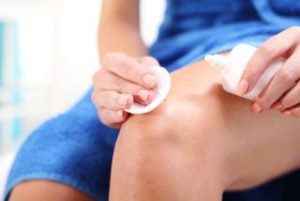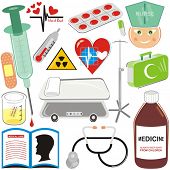List of antiseptics for wounds includes top 14 best household, natural and topical antiseptics for wounds. These products and medications that are available commonly for open and closed wounds. Antiseptics are used for preventing the growth of micro-organisms. But they cannot kill the micro organisms.
List of top 14 best antiseptics for wounds !
Spirit :
It is a 70% solution of alcohol in water. It kills bacteria effectively. It is used for disinfection of the skin, instruments and ampoules of injections.
It is used for disinfection of raw surfaces and wounds because it exposes tissue, aggravates injuries, and removes the coagulum formed that prevents bacterial entry into the wound.
Acriflavine :
It is aniline derivative, soluble in water. It is orange in powder form and yellow in 1:1000 aqueous solution. It stains tissues yellow.
It has a bacteriostatic and bactericidal action upon a variety of bacteria, especially gram positive bacteria in an alkaline medium. It is used in dressing of the wounds.
Boric Acid :
It is available in the form of colourless and odourless crystals or white powder. Its solubility in water is 5 % and in glycerin 25%. It is used as solution, dusting powder, or ointment.
It is effective for mucosal inflammation such as eczema, burns, impetigo, fungal infections of skin and bed sores. Its solution is also used for mouth wash and irrigation of bladder.
Carbolic acid :
It is a hygroscopic and highly corrosive substance. It is used as disinfectant for sharp instruments like scissors and knife blades. It is used topically to cauterize dog bites, snake bites and other small wounds.
Gentian violet :
It is moderately soluble in water, alcohol and glycerin. Its 1% solution in 10% alcohol is used for superficial pyogenic infection of skin and mucous membranes, chronic and irritant lesions of the skin.
Glycerin :
It is a colourless, odourless, hygroscopic, thick liquid. It is used with other substances mainly magnesium sulphate to reduce swelling in inflammation.
Hydrogen peroxide :
It is used in cleaning of wounds. It breaks down into nascent (active) oxygen and water. The oxygen bubbles removes tissue debris from inaccessible parts of wounds. It also kills bacteria by oxidation.
Iodine :
It is in the form of grayish-black, brittle plate-shaped crystals with a metallic luster. Its tincture contains 2% iodine and 2% potassium iodine in alcoholic solution and is a necessary component in the list of antiseptics for wounds.
It is used for disinfection of skin and treatment of wounds. Its 0.5 to 1% aqueous solution is used for application to wounds. 0.5 to 1% aqueous solution is used for application to wounds.0.1% solution for irrigation, and 2% solution in glycerin for application to mucous membranes.
Iodoform :
It is a mixture of iodine, alcohol and potash. It has a penetrating rather pleasant smell. It is a mild antiseptic. It relieves pain when applied to a raw mucous surface and prevents putrefaction in wounds discharging pus.
Merbromin (Mercurochrome) :
It is an organic salt of mercury with weak antiseptic action. It is more bacteriostatic and less irritating and less toxic than inorganic salts of mercury. It is used as antiseptic over dressing.
Nitrofurazone :
It is used as topical antibacterial agent in the treatment of mixed infections of skin wounds.
Povidone iodine :
It is a complex of iodine with polyvinylpyrolidine and is available as 5 and 10% solutions for antiseptic use. It is less painful than tincture of iodine when applied to wounds.
Silver nitrate :
It is in the form of colourless crystals freely soluble in water. It is caustic, antiseptic and astringent. Its sticks are used for chemical cauterization of granulation tissue.
Its 1:1000 solution is used for irrigation of bladder. Its 10% solution is used for application to infected oral ulcers.
Sulfur ointment :
It contains 10% precipitated sulfur. It is a fungicide and parasiticide. It is used for various skin disorders.
RELATED TOPICS
Personal trainer certification
Personal injury lawyers in Phoenix
Online medical assistant schools

